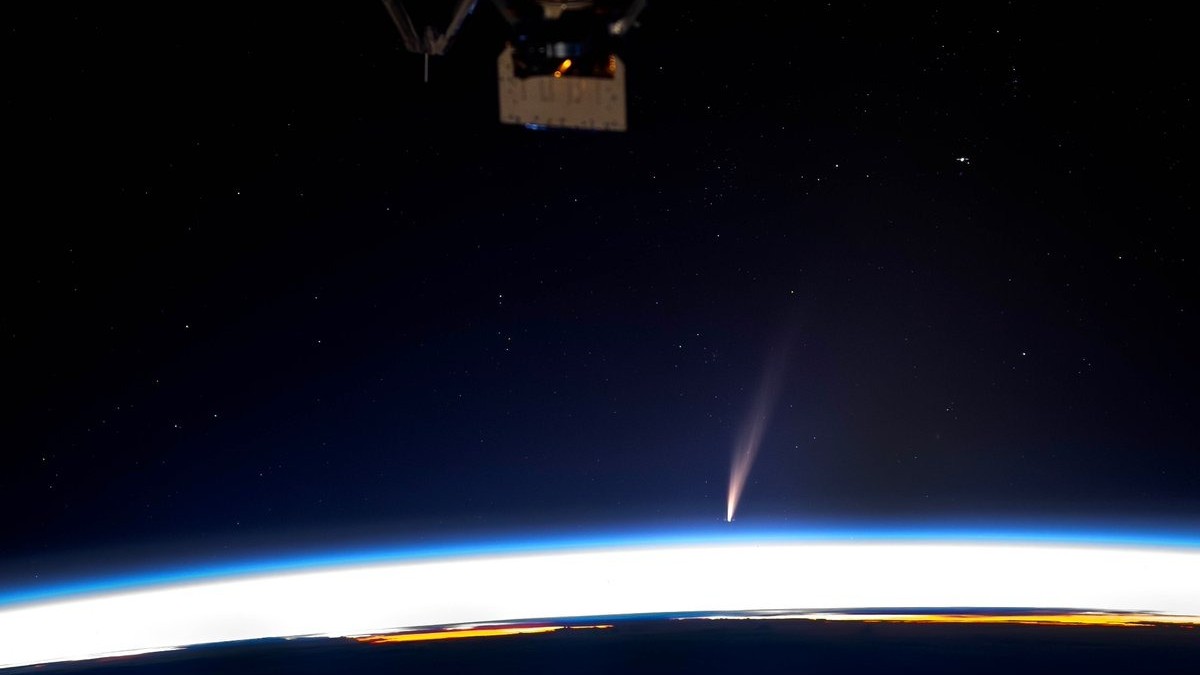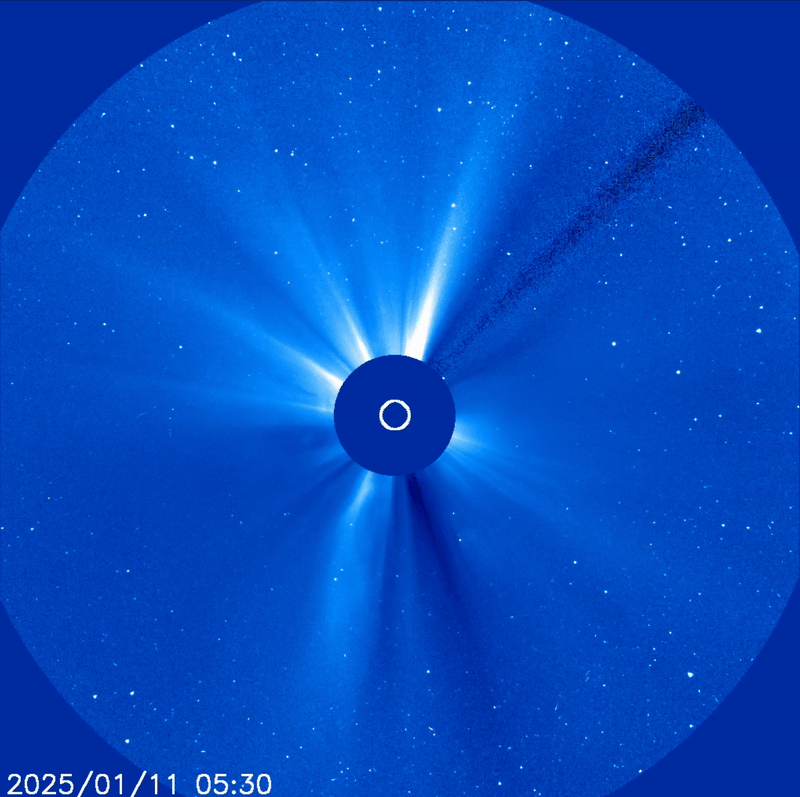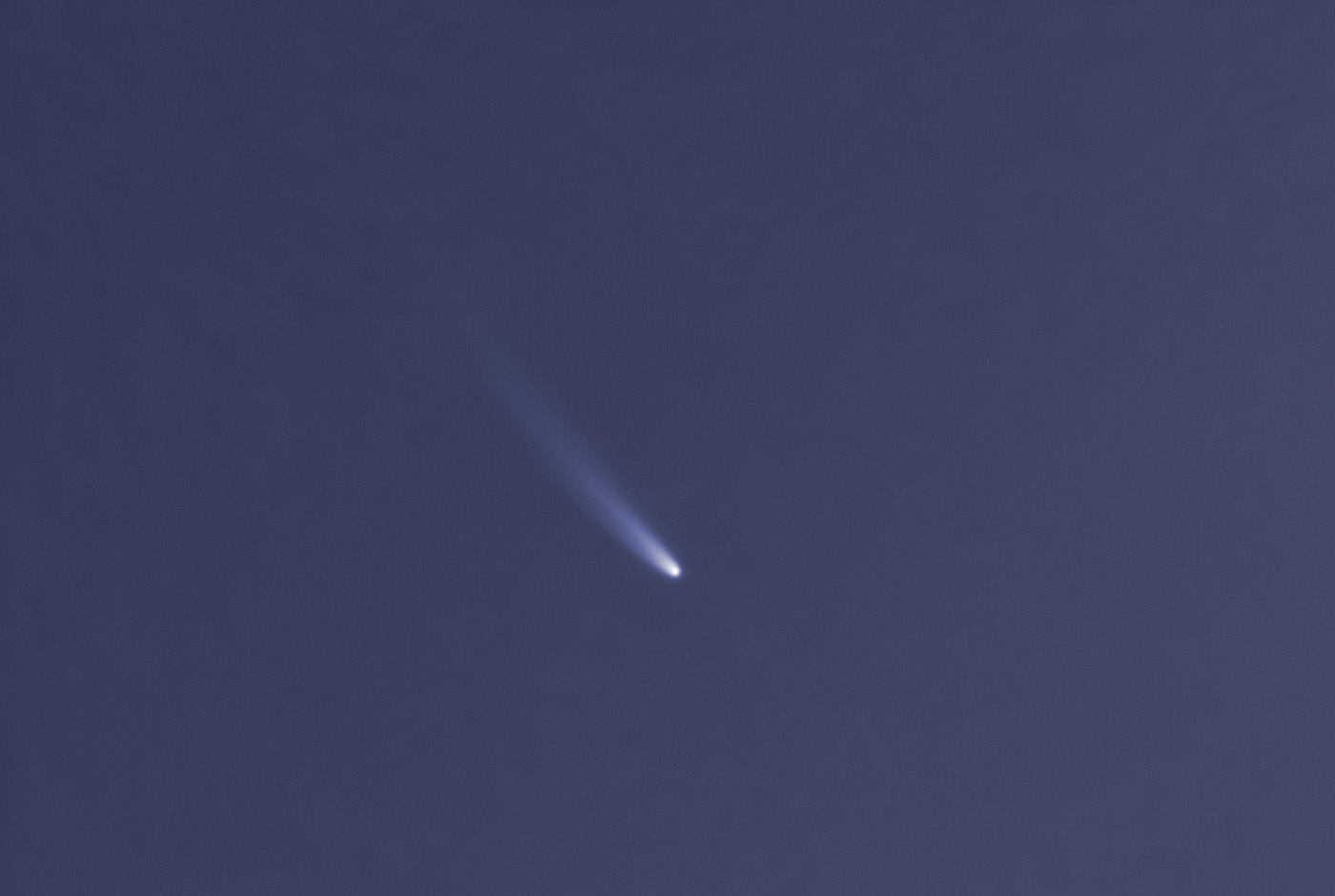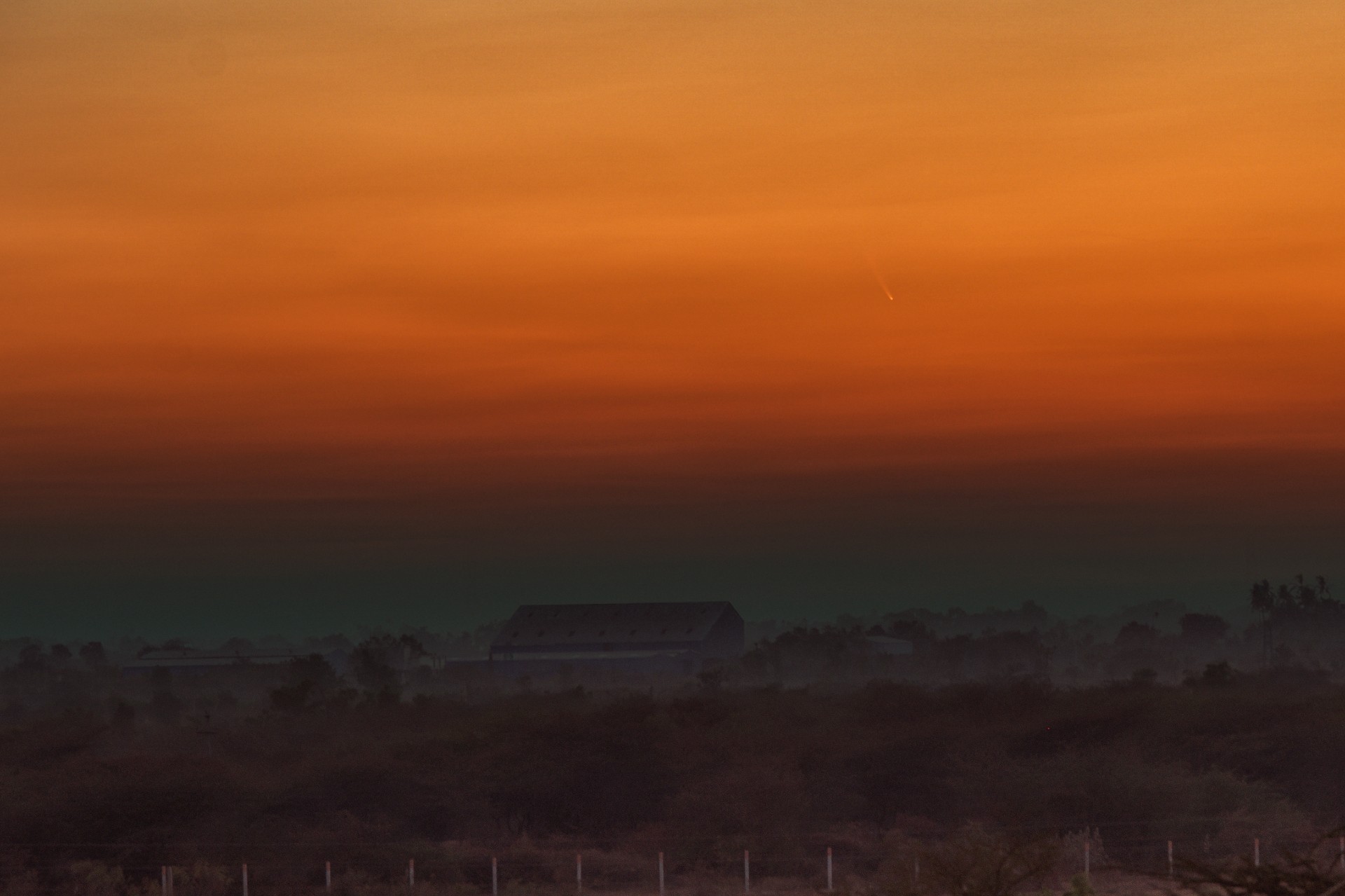Why Comet G3 (ATLAS) will be 'remembered as the Great Comet of 2025' (photos)
Amateur and professional astronomers have been thrilled by the Comet 2024 G3 (ATLAS) putting on a spectacular show on dates around January the 15th. Following its closest approach to the sun on 13 January, the comet suddenly became very bright and shortly afterwards developed a notable and well-defined tail.
In 18 years. For several days, it was visible to most locations in the Northern Hemisphere with clear, cloudless skies and unobstructed views of the horizon.
This comet is one of the few recorded to have shone brightly enough to be visible during the daytime without requiring the use of a telescope or binoculars in the United Kingdom.
Regrettably for those north of the equator, getting a view of the comet was a brief window of opportunity, lasting only for approximately a week, with the peak visibility centred on the day of perihelion. For most of its passage, comet C/2024 G3 (ATLAS) has been mainly visible to Southern Hemisphere observers.
As the first month of the year got underway, astronomers estimated that the comet was shining at around a third magnitude, which is roughly the brightness of a moderately bright star. However, on 2nd January, Terry Lovejoy, an experienced Australian comet observer, reported that it appeared to be experiencing a significant increase in brightness. Within a day, the comet had brightened by nearly a full magnitude to magnitude +2, equating to a nearly threefold increase in visibility, comparable to the brightness of Polaris, the North Pole Star.
Increasingly difficult to see
By 7th January, the comet was reportedly visible at its brightest, reaching magnitude one, and had a tail about half a degree long, roughly the same size as the moon appears in the sky. By this time though, the comet's proximity to the sun was making it more challenging for astronomers to observe it, as it was seemingly emerging earlier in the eastern sky and becoming obscured by the bright dawn light.
on Jan. 11.
The images taken showed that the comet's tail was growing more distinct, its glow tempered by the brightness of the comet's head, which shone almost as brightly as the planet Mercury, that was then visible at magnitude -0.3.

Rendezvous with the sun
The comet reached its closest point to the sun on 13 January, just before 1000 Universal Time (UT), and was approximately 8.7 million miles from the central star at this point. That same day, it also made its closest approach to Earth, being roughly 87 million miles away at its nearest point.
Utilising SOHO's LASCO C3 camera, which is designed for large angle and spectrometric coronagraph experimentation.
The comet did not fail to impress, presenting a breathtaking display as it transited into view of the LASCO C3 camera.

Polish researcher Mieczyslaw Paradowski closely watched the growth in brightness of comet C/2024 G3 (ATLAS) as it moved through LASCO C3 imagery. Its brightness jumped from a magnitude of minus 0.8 on 11 January at 10:33 UT to a magnitude of minus 3.8 on 13 January at 9:36 UT – an increase of approximately 16 times its original brightness in under 48 hours.
The Comet remained shining brightly for almost nine hours before it started to dim gradually.
In broad daylight
The comet's sudden brightness had people eager to search for it during the day, but attempting to do so was extremely perilous due to its proximity to the sun. For perspective, holding a clenched fist at arm's length would normally measure approximately 10 degrees on the sky, but at its closest point the comet appeared roughly half that distance away from the sun in the sky. Viewing the comet alone posed no risk, but accidentally catching a glimpse of the sun through binoculars or a telescope could have resulted in permanent blindness.
On the day before its closest approach to the sun, experienced comet observer Maik Meyer of Linter, Germany, shielded the direct sunlight from his field of view with his roof and used his 10 x 50 binoculars to scan the area of sky directly above the sun. "There was a lot of moisture in the air and passing clouds," he notes, adding, "Unfortunately, I couldn't see anything."
From sites with clearer skies and less atmospheric moisture, the comet was observable against the daytime blue sky.
Chris Schur of Payson, Arizona successfully captured images of C/2024 G3 (ATLAS) on two consecutive mornings, the 12th and 13th January, at approximately 11 o'clock, using a 10-inch telescope with a focal ratio of 3.9. "The comet was 5 degrees from the Sun, and I employed a specific baffle tube system to prevent sunlight from entering the telescope."

To enhance the visual distinction between the celestial background and the comet it was decided to calculate the colours of the background.
Mr Dorman identifies that if he had to make a rough estimate of the comet's brightness, it would be roughly -3.5 magnitude. "It's much like viewing Venus when it's very close to sunrise, making it difficult to spot with the naked eye at its brightest."
.
.
The comet blossoms
As Comet 2024 G3 (ATLAS) broke free from the sun and began to set over the sky, it transformed into a visually striking phenomenon.
Mike Olason from Denver, Colorado remarked on 15th January: "For a comet considered to be challenging to spot in the Northern Hemisphere, C/2024 G3 has turned out to be quite a surprise as it shifted from appearing in our morning dawn skies into our evening twilight skies. As the sun set, the comet was an easily visible object when viewed through a 50mm f/3.5 refractor and an ASI178MC camera. Within 15 minutes of sunset, it was also simple to spot the comet with 8x21 binoculars, and its coma appeared bright and star-like, with a tail pointing upwards, away from the horizon."
The next night, Mr. Olason thought the comet was probably more conspicuous. ". . . given that on the previous night the comet had been visible in an intense orange twilight, while tonight it was visible against a clear blue sky above that orange glow."
On 15 January, John W Briggs of Magdalena, New Mexico, remarked: "We achieved success at dusk! The object was observed magnificently! My spouse also witnessed it. Initially, we used binoculars, before switching to a 4⅛-inch f/5 refracting telescope with a 22-mm Nagler eyepiece."

Regrettably, the comet rapidly moved southwards, rendering it inaccessible to the majority of viewers in the Northern Hemisphere. In contrast, observers in the Southern Hemisphere were able to witness the comet's transformation into a breathtaking celestial spectacle.
From Conceição do Coité, Bahia, Brazil, on the 21st of January, Alexsandro Mota described the comet as "Shining brightly."
Michael Mattiazzo of Swan Hill, Australia observed the comet on 22 January and described it as 'The best so far; A splendid comet visible to the naked eye.' He noted that the tail spreads approximately 15 degrees, roughly the length of the Big Dipper's handle, and observed several additional tails to the north.
One of the comet's most notable characteristics was undeniably its tail formation. Visible to the naked eye, there were two distinct tail formations - a narrow, straight tail pointing virtually directly upwards, which was attributable to gas, and a broad, curved tail extending to the north, reflecting the sunlight and comprising dust that had been ejected from the neck of the comet.
One of the greats!
."
He also noted that the dust tail consisted of parallel striations. Each such striation marked the path of dust grains which were expelled from the nucleus at the same time, the smaller particles being pushed further due to solar radiation pressure.
Mr. Bortle noted, "There is little doubt that, with its daylight display and impressive evening spectacle on a cloudless night sky, Comet 2024 G3 will be well-remembered as the Great Comet of 2025, as long as the past decade's Comet McNaught first sighting has been."
Heartbreak wasn't too tough to bear
When Chris Schur took his daytime photographs of the comet on 12 and 13 January, he reported that: "The nucleus of the comet is solitary, star-like and not disintegrating as far as I can see."
Suddenly, events took a rapid turn for the worse.
Image analysing the comet from Chile, Hungarian astronomer Lionel Majzik was the first to spot significant changes in the comet between 18 January and 19 January. The comet's bright, compact core suddenly appeared more scattered. This suggested that the nucleus of comet 2024 G3 was falling apart, which was later confirmed by observers in Australia.
Although this wasn't entirely unexpected, considering the comet's proximity to the sun - it's only about a quarter of Mercury's distance away - the comet's small core would have been exposed to incredibly hot temperatures, in the region of several thousand degrees Fahrenheit, due to the much higher levels of sunlight and also the very strong gravitational and tidal forces it was experiencing.
There is a specific classification for celestial bodies such as comets, these:
"Headless wonders."
What's the best course of action to take next?
As previously mentioned, the comet is now beyond the viewing range of the Northern Hemisphere, but visibility from the Southern Hemisphere is likely to become increasingly difficult in the coming days. It may be seen a couple of hours after sunset, low in the southwest sky, although a rapid decrease in light is also taking place as the comet speeds away from both the sun and the Earth.
By the end of January, this comet will be visible at a brightness of third magnitude, however, by the beginning of February, its light will have significantly reduced to a fifth magnitude, and by mid-February, binoculars or a telescope will be necessary to identify it.
The observations of this comet were recorded by Dr. Syuichi Nakano, a Japanese astronomer, from April 5 to December 22, 2024. Unfortunately, its orbital period is approximately 160,000 years. Yet, as it moves further away from the Sun, external forces from the planets will disrupt its orbit even more, causing its next closest point to the Sun, the perihelion, to return in around 600,000 years.
Here is the paraphrased text in UK English:
Joe Rao serves as an instructor and guest lecturer at New York (state)'s
Hayden Planetarium
He discusses astronomy for
Natural History magazine
, the
Farmers' Almanac
and other publications.
Post a Comment for "Why Comet G3 (ATLAS) will be 'remembered as the Great Comet of 2025' (photos)"